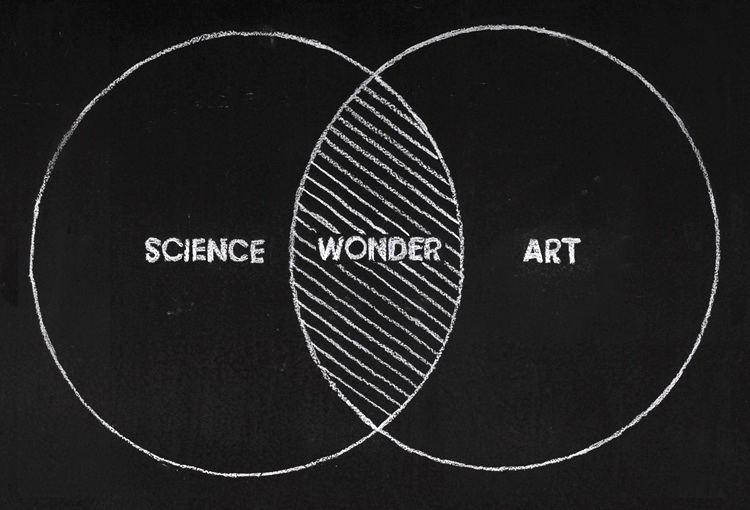Jan
2016
Creativity in science education is essential
There is a pervasive meme in the collective consciousness that science is a purely rational pursuit with no room for bringing in personal experiences or points of view. This, in my experience, is entirely false. Science is fundamentally a creative pursuit. Good scientists know how to draw connections between disparate ideas and disciplines. Paradigm-changing scientists know how to look at old problems in a way that no one else has ever looked at them and create an idea that is entirely new.
While it is true that professional scientists have to have immense creativity, science education often lags behind in training creative scientists. Classes that emphasize rote memorization and do not take an interdisciplinary approach can stifle scientific creativity.
Some science professionals have responded to this divide by adding a letter to the traditional acronym STEM (Science Technology Engineering Mathematics) and making it instead STEAM (Science Technology Engineering Arts Mathematics). This is meant to show a connection between the creativity of all of these fields and lead to more interdisciplinary projects between STEM fields and the Arts. Another approach in middle, secondary, and university education is integrated science and technology fairs that emphasize taking a creative design approach to designing science fair projects, posters, and materials.
STEM active pedagogy projects in the SIF program at Georgia State University (GSU) are also responding to this dearth of creativity in science classrooms. Fellow SIFs Andrew Berens and Megan Smith and Taylor Burch, an Instructional Designer at the Center for Innovative Instruction, are doing great work together to create a series of creatively-designed climate labs for students at GSU.
As a part of my own project on the SIF physics active pedagogy project, I have been writing a series of roleplays designed to teach graduate and undergraduate teaching assistants (TAs) in physics labs to facilitate group work. As a large component of these roleplays, I have been thinking a lot about the role of creativity in science education.
In our roleplays, the TAs are required to embody an assigned role as a “TA” or a “student.” The “students” work in groups of three while the “TAs” are supposed to help facilitate the “students” thinking deeply about the physics problems they are solving by asking questions. Those who take on the roleplays often find them challenging because they are being asked to take a limited amount of information about their roles and fill in the gaps with a semi-improvised performance. This is remarkably similar to what their students do when solving physics problems in their classes. Students have to take a limited amount of information and find the connections so that they can draw conclusions. By teaching TAs about creative problem solving through roleplays, we hope that they will use this model with the students in their classes.
Training future scientists and citizens starts with showing students in science class why science is important and how it connects with other disciplines and ideas. The best way to do this is through training creativity-oriented future science educators who can show students through hands-on learning how everything in the natural world is connected.
